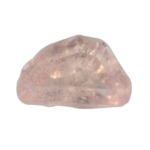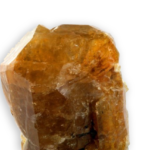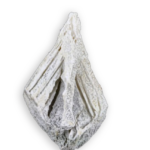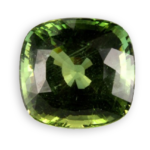
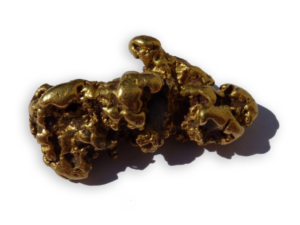
gold
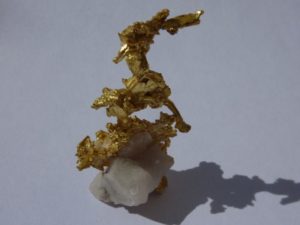
gold crystallized on quartz from Colorado U.S.A.
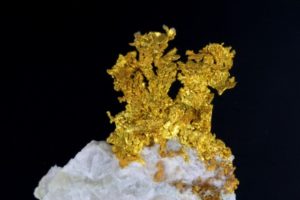
native gold form California U.S.
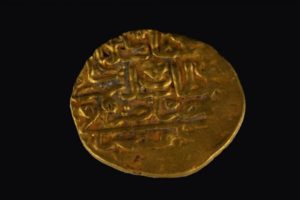
Ottoman golden coin, Suleiman I.
Detailed sheet
gold
Gold is the mineral that has been known and most sought since prehistoric times, its name comes from the Latin “aurum”.
Its warm color, its softness made it the preferred metal for jewelry because it is malleable and ductile. Furthermore it is found in nature in its metal form without the need to master metallurgy in order to extract the metal from ore. It is practically indestructible in nature, only mercury forms an amalgam with it. It melts at 1063 ° C, a low melting temperature for a metal that makes it easy to use in jewelry.
In the form of nuggets as found in nature it is almost never pure and contains silver, platinum, palladium. .. the density of chips is between 15 and 19.3 (pure gold) is one of the densest metals. It is also found in deposits called primary, in “veins” in the original rock in which it was formed, but the finest gold discoveries were made in secondary deposits called “placers” where pieces of gold torn from the mountains by erosion are deposited by the waters of rivers.
Its rarity has made it a monetary standard, the gold standard, for millennia, and its malleability facilitated the coinage. Its large value has always caused the desire to find some and make a fortune … causing “gold rushes” and wars throughout the history of mankind.
It has always been a symbol of wealth and power, all the great historical civilizations have revered it, such as the Egyptians, Greeks , Romans, Persians … but also those of Central and South America, Incas, Aztecs … looted during the arrival of the conquistadors and creating the myth of El Dorado, a country where gold is abundant.
The quest of the alchemists was to find a way to make gold from other chemical elements .. .

CHEMICAL CHARACTERISTICS
Au
gold

PHYSICAL CHARACTERISTICS
Main color
yellow
characteristic golden yellow
Color of streak
yellow
Luster
metallic
Hardness
2.5 to 3.0
Density
19.30 to 0.00
Cleavage
none
Fracture
none
Gold is soft, it does not break

OPTICAL PROPERTIES
Transparency
opaque
translucent and even transparent when in very thin sheets
Refractive index
0.000 - 0.000
Double refraction
0.000
refringence and birefringence unmeasurable
visible double refraction
No
Pleochroism
absent
Number of colors
1
Fluorescence
none
Inclusions
as it is soft, the nuggets, retain within pieces of the original rock, or include other pieces of minerals during their path

CRYSTALS PROPERTIES
hexoctahedrals, it also forms a kind of feathers made of crystals
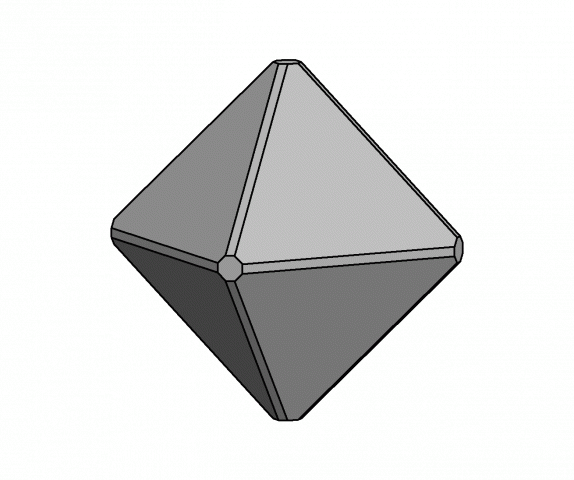
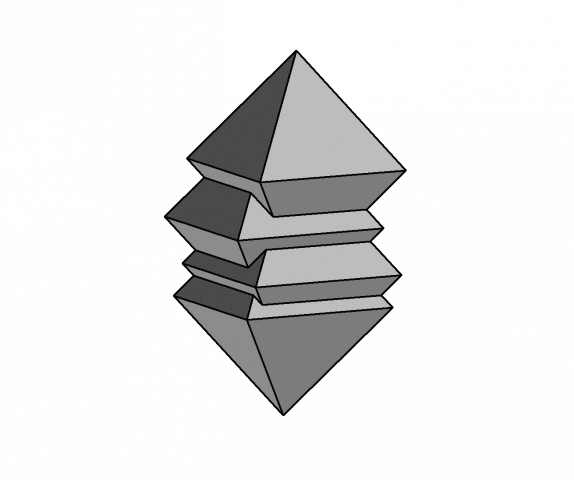
crystals system
cubic

OTHER INFORMATIONS

APPROACHING GEMS
Exploited
sites
It is found mainly in two types of deposits: in the rock where it forms veins, and veins, where it is visible to the naked eye. This is known as native gold, sometimes well crystallized. These veins are often found in quartz. Where erosion destroys these rocks, gold is washed away by rain and the course of rivers, dense pieces of gold that have been rolled and rounded are deposited when the river flow weakens and is then found in nuggets or flakes. These deposits are called placers and are prospected by miners who recover the gold by panning. These placers exist in the current river beds but also in the location where flowing rivers now have disappeared. Gold also exists in small amounts in other minerals, it is then exploited as a byproduct.
The main gold producing countries today are China (which has just become the world’s largest producer), Australia, the United States, south Africa, Russia, Peru, Ghana, Canada ….
In France gold has been mined since the Neolithic, and especially by the Romans in ancient Gaul. Many mines or deposits have been exploited: La Gardette near Bourg d’Oisans in the Alps, The Belliere in Maine-et-Loire, Mayenne La Lucette, in the Limousin in Brittany. The mine of Salsigne in the Aude which ceased operations in 2001 was one of the last significant gold mines in France.
Throughout the world the discovery of new deposits has caused significant population displacements as for the rush for gold in California that has accelerated the westward expansion in the United States in the nineteenth century.
use in jewelry
This is the most widely used metal in jewelry but its softness, its malleability and ductility make that pure gold jewelry is very fragile. Nevertheless jewelry in Africa continue to be produced with practically pure gold as found in nature (often of 22 carats, or more than 90% gold), easy to work by goldsmiths and jewelers. It was used as an alloy with other metals making it more resistant and hard: copper, silver, nickel, platinum and palladium that change its color. Depending on the proportions, it may become pink, gray or red or green, but many countries currently restrict the use of alloy with nickel because of the risk of allergy to this metal.
The gold alloy most used currently in jewelry contains 75% pure gold, it is called 18 carats gold (that have nothing to do with the carat unit of weight for precious stones) because pure gold is said 24 carat. Some countries allow the alloys to 14 karat gold or 9 carat.
The white gold is an alloy of gold with a thin layer of rhodium which protects it from oxidation and gives it a brilliant look putting gemstones in value.
Gold coins generally contain at least 90% pure gold. Gold is also used in electronics and to gild other metals or for applications of a gold leaf to gild other media such as frames, statues …
In all countries, the state controls the quality of the gold (the proportion of gold in the alloy) with specific punches to ensure that the jewelry or the object is gold and not an imitation.
Daily care
and precautions
Very easy to maintain, it is insensitive to household products, but it fears shocks that mark it and scratch it easily. Gold jewelry need to be repolished to restore their original shine. Caution to mercury that “dissolves” the gold, forming an amalgam.
imitations and
treatments
This is the material that has been more attempted over the imitations … as it was difficult to find a substance ressembling gold, they mainly consisted in covering another metal with a small amount of gold to make it appear as an object of pure gold. With the appearance of gold coins, some pieces only covered with gold started appearing. The jewelry called “gold plated” is comprised of a base metal coated with a thin gold foil or a gold deposit by chemical process. Some ancient civilizations, as in South America, mastered its metallurgy and discovered a way to coat metal objects with a layer of gold that was mixed with the metal support … Nuclear physics has recreated artificially atoms gold as science experiment… they are radioactive and their cost of production far exceeds that of gold!
Historical
healing properties
Gold has always been regarded as a heat source, it would purify and make the human body in shape. It is related to the heart chakra and the one at the top and has a regulatory role. According to the ancients would bring wisdom and allow to better understand the environment by making our vision clearer and helping us to step back. It would be a natural amplifier, it would give us the strength to undertake large scale projects both in terms of practical achievements than that of our spiritual journey. Gold would induce in each one a noble behavior issued from material constraints.
historical stones
and related legends
With each discovery of gold in a region of the world, the news caused a “gold rush”, each one with a chance to get rich quickly. The nineteenth century saw the largest gold rushes in history. California in 1848 : near a sawmill James Marshall and August Sutter accidentally discovered gold, the news can not be kept secret and spreaded … in the following months 300,000 adventurers from around the world arrived to make their fortunes and helped to develop the city of San Francisco where the boats with migrants docked. In 1851, 77 tons of gold, were produced in California. In 1849 in the Sierra Nevada, a gold vein was discovered, it’s the “Mother Lode” one of the largest gold deposits in the world, it extends for 200 km, and later, in 1890, in Colorado at Cripple Creek a deposit was discovered in which the ore contains a very large proportion of gold. 1850: it is in Australia in New South Wales that Hargraves who returned from California, was looking for the same type of gold deposit in his home country … he discovers it in a few days! Within a few months tens of thousands of researchers arrive. The largest gold nugget ever found called “Welcome Stranger” was discovered in 1869 in the state of Victoria, it weighed 65.2 kg. Then it was in New Zealand in Dunedin in 1861 that gold was discovered. In 1886, South Africa has discovered a deposit where the gold is not visible in nuggets or pieces of the rock: it is a mineral that contains small amounts of gold, but in large quantities: it is the largest gold deposit in the world. Then came Canada and Alaska :in 1896 Henderson and Carmack are the cause of a rush to the Klondike River in British Columbia …In 1898, Lindenberg, Brynteson and Lindblom discovered gold in Alaska in an area of extreme weather … this deposit is quickly becoming the largest producer in the United States despite the very difficult operating conditions.
Venez visitez
notre site web
voillot-joaillier.fr
Lorem ipsum dolor sit amet, consectetur adipiscing elit. Ut elit tellus, luctus nec ullamcorper mattis, pulvinar dapibus leo.Lorem ipsum dolor sit amet, consectetur adipiscing elit. Ut elit tellus, luctus nec ullamcorper mattis, pulvinar dapibus leo consectetur adipiscing elit. Ut elit tellus, luctus nec.

